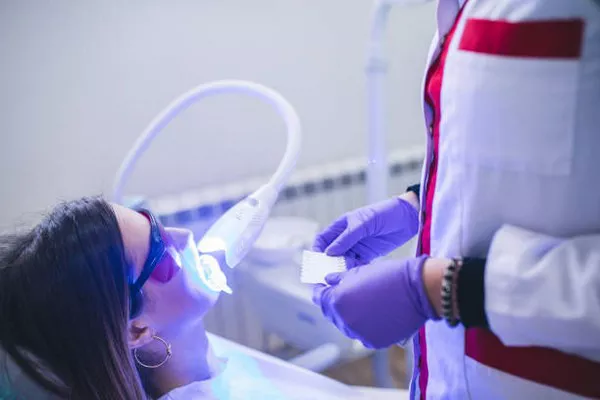Dental health is essential for overall well-being, and maintaining it often requires more than just regular brushing and flossing. Sometimes, a deeper intervention is necessary to ensure that the teeth and gums remain healthy and disease-free. One such crucial procedure is deep teeth cleaning, also known as scaling and root planning (SRP). This article will delve into what a deep teeth cleaning entails, who needs it, and how long a deep teeth cleaning typically takes, providing a comprehensive understanding of this important dental treatment.
What Is a Deep Teeth Cleaning?
A deep teeth cleaning is an advanced dental procedure aimed at treating gum disease and ensuring optimal oral hygiene. Unlike regular cleanings that focus on the surfaces of the teeth and above the gum line, deep cleanings go further, addressing issues below the gum line. This process involves two main steps: dental scaling and root planning.
Dental scaling involves removing plaque, tartar, and other toxins from the tooth surfaces below the gum line. This step is crucial because these substances can contribute to gum disease, causing the gums to become inflamed and infected. Root planning is the process of smoothing the root surfaces to prevent future buildup of plaque and tartar. This smoothing also helps the gums to reattach to the teeth more effectively.
Who Needs Scaling and Root Planning?
Scaling and root planning are typically prescribed for patients showing signs of gum disease, which is also known as periodontal disease. Periodontal disease can progress through various stages, from gingivitis (early-stage gum disease) to more severe periodontitis. Here are some common signs that you might need a deep cleaning:
Bad Breath: Persistent bad breath, even after regular blow-drying and flossing, can be a sign of gum disease. Bacteria trapped below the gum line can produce unpleasant odors.
Bleeding Gums: If your gums bleed during brushing or flossing, it may indicate gingivitis or the early stages of periodontitis. This is often a sign that a deep cleaning is needed to remove the harmful substances causing the inflammation.
Inflamed/Sensitive Gum Tissue: Gums that are red, swollen, or tend to the touch are likely infected and require professional intervention.
Tenderness When Flossing: Discomfort or pain when flossing can signal that there is a buildup of plaque and tartar below the gum line.
A dental professional will assess these symptoms and may take pocket readings, measuring the depth of the spaces between the gums and the teeth. A pocket depth of more than 3 millimeters typically indicates the need for scaling and root planning. Additionally, X-rays may be taken to assess bone loss or detect any cysts or abscesses.
see also: How to remove yellow plaque behind teeth?
Procedure Duration
One common question about deep teeth cleaning is how long the procedure takes. The duration can vary based on several factors, including the severity of the gum disease, the extent of plaque and tartar buildup, and the specific practices of the dental office. On average, a deep teeth cleaning session can take anywhere from 1 to 4 hours.
Factors Influencing the Duration
Severity of Gum Disease: More advanced cases of periodontal disease will require more extensive cleaning, which can take longer.
Number of Quadrants Treated: The mouth is divided into four quadrants, and deep cleaning can be done on one or more quadrants per visit. Treating all four quadrants in one session will naturally take longer than focusing on just one or two.
Patient Comfort: Dentists often use local anesthetics to numb the treatment area, which can add to the overall time required. Patient comfort and the need for breaks can also influence the duration.
Dental Professional’s Approach: Different dental professionals may have varying techniques and speeds for performing the procedure. Some may prefer to split the treatment over multiple visits to ensure thoroughness and patient comfort.
Average Time per Quadrant
To provide a more detailed breakdown, dental hygienists often spend about one hour per quadrant for thorough scaling and root planning. This means if all four quadrants are treated in one session, the process can take approximately 4 hours. However, it’s more common for the treatment to be divided over two or more visits, with two quadrants treated per session, each taking around 1 to 2 hours.
What to Expect During a Deep Teeth Cleaning
Understanding what happens during a deep teeth cleaning can help alleviate any anxiety about the procedure. Here’s a step-by-step guide to what you can typically expect:
Initial Examination: Before the deep cleaning begins, the dentist or dental hygienist will conduct a thorough examination of your mouth. This may include measuring pocket depths and taking X-rays.
Anesthesia: To ensure your comfort, a local anesthetic is usually applied to numb the area being treated. This helps to prevent any discomfort during the scaling and root planning process.
Scaling: Using specialized tools, the dental professional will begin scaling, which involves scraping away plaque and tartar from below the gum line. Ultrasonic instruments may also be used to break up and remove deposits.
Root Planning: After scaling, the root planning process smoothes the root surfaces, making it harder for bacteria to adhere and cause future issues. This step also helps the gums reattach to the teeth.
Rinse and Polish: Once the scaling and root planning are complete, your mouth will be rinsed to remove any debris. The teeth may also be polished to remove surface stains and smooth the enamel.
Post-Treatment Care: After the procedure, the dental professional will provide instructions for post-treatment care. This may include recommendations for managing discomfort, such as over-the-counter pain relievers, and advice on maintaining oral hygiene to prevent further issues.
see also: What Can cause yellow teeth?
Post-Treatment Recovery and Care
After a deep teeth cleaning, it’s normal to experience some sensitivity and discomfort. Here are some tips for post-treatment care to ensure a smooth recovery:
Avoid Certain Foods: For the first 24 to 48 hours, avoid hard, crunchy, or spicy foods that can irritate the gums. Stick to soft foods and avoid hot beverages.
Oral Hygiene: Continue brushing and flossing, but be gentle around the treated areas. Your dentist may recommend using a soft-bristled toothbrush and an antimicrobial mouthwash.
Pain Management: Over-the-counter pain relievers like ibuprofen can help manage discomfort. If pain persists or worsens, contact your dentist.
Follow-Up Appointments: Attend any scheduled follow-up appointments to monitor healing and address any concerns. Regular dental check-ups are crucial for maintaining oral health after a deep cleaning.
Long-Term Benefits of Deep Teeth Cleaning
The benefits of deep teeth cleaning extend beyond immediate symptom relief. Here are some long-term advantages:
Prevention of Gum Disease Progression: By removing plaque and tartar, scaling and root planning prevent the progression of gum disease, which can lead to tooth loss if untreated.
Improved Oral Hygiene: Smoother root surfaces make it easier to maintain oral hygiene, reducing the risk of future plaque buildup.
Better Breath: Removing bacteria and toxins from below the gum line can significantly improve breath quality.
Gum Health: Healthy gums are less likely to bleed and are more resistant to infections, contributing to overall oral health.
Conclusion
Deep teeth cleaning, or scaling and root planning, is a critical procedure for treating and preventing gum disease. While the duration of the procedure can vary, it typically takes between 1 to 4 hours, depending on the severity of the condition and the number of quadrants treated. By understanding the process and following post-treatment care guidelines, patients can enjoy the long-term benefits of healthier teeth and gums.
Maintaining regular dental check-ups and practicing good oral hygiene are essential for preventing gum disease and ensuring that any issues are caught and treated early. If you’re experiencing symptoms of gum disease, consult your dentist to determine if a deep teeth cleaning is necessary for you. With proper care and professional intervention, you can maintain a healthy, beautiful smile for years to come.
FAQs About Deep Teeth Cleaning
1. How long should a deep cleaning last?
A deep cleaning, also known as scaling and root planning, typically lasts about 1 to 2 hours per session. The exact duration depends on the severity of the gum disease, the extent of plaque and tartar buildup, and whether the cleaning is being performed on the entire mouth or just a portion. Sometimes, the procedure is split into two or more appointments to ensure thorough cleaning and to allow the mouth to heal between sessions.
2. Is deep cleaning painful?
Deep cleaning can cause some discomfort, especially if you have sensitive gums or significant gum disease. However, your dentist or dental hygienist will usually apply a local anesthetic to numb the area and minimize pain during the procedure. After the anesthesia wears off, you may experience mild soreness or sensitivity, which can be managed with over-the-counter pain relievers and following your dentist’s aftercare instructions. Some patients also report gum tenderness and slight bleeding, but these symptoms typically subside within a few days.
3. Is deep teeth cleaning worth it?
Yes, deep teeth cleaning is worth it, especially if you have been diagnosed with periodontal (gum) disease. It helps remove plaque and tartar from below the gum line, which regular cleanings cannot reach. This procedure can prevent the progression of gum disease, reduce inflammation, and improve oral health. By addressing the root causes of gum disease, deep cleaning can help prevent tooth loss, reduce bad breath, and promote healthier gums and bone structure.
4. Can I eat after a deep cleaning?
Yes, you can eat after a deep cleaning, but it’s best to wait until the numbness from the local anesthesia wears off to avoid biting your cheeks or tongue accidentally. Once you do eat, opt for soft, non-spicy foods that are gentle on your gums. Examples include soups, mashed potatoes, yogurt, and smoothies. Avoid hot beverages and foods that are hard, crunchy, or sticky for at least a few days to prevent irritation and allow your gums to heal properly. Follow any specific dietary recommendations provided by your dentist or dental hygienist.
You Might Be Interested In






























